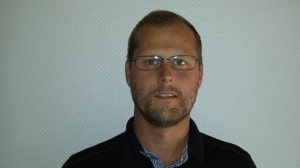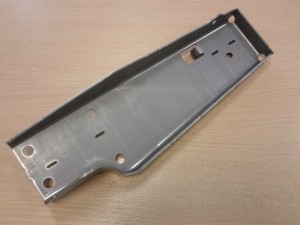It is an all-Italian machine chosen by an important Swedish company to upgrade and to optimize its production process. The target is represented by the offer of an even more flexible and competitive structure to the market, assuring much higher qualitative level.

Constant technological innovation and productive experience are the distinguishing traits of Zani, company headquartered at Turate (CO) that for over 50 years has been operating in the design of machines, plants and systems for the sheet metal forming. A product range that today includes machines of the Power Master series (kinematic eccentric presses, with power from 1,000 to 20,000 kN, tables up to 7 m, in versions with 1-2-4 connecting rods, fixed or adjustable strokes up to 600 mm, machining speed up to 200 c/min), machines of the Motion Master series (presses with double knuckle-joint kinematics, modified for slowdown, with powers from 1,000 to 30,000 kn, tables up to 7 m, 1-2-4 connecting rods, fixed or adjustable strokes up to 800 mm, maximum working speed of 200 c/min). These are then completed by the presses belonging to the Servo Master series, presses with eccentric kinematics or knuckle-joint driven by servomotors, just like the one purchased by the Swedish Finnveden Metal Structures, company that produces components and items of various typologies: internal parts, frame and bodywork components for the automotive industry, as well as standard and design components for the general industry field.

Power and flexibility without compromise
With flexible and programmable press cycle in conventional or pendulum motion, the presses belonging to the Servo Master range can boast a power ranging from a minimum of 2,000 to a maximum of 30,000 kN, with tables up to 7 m. The equipment provides then for 1-2-4 connecting rods, for fixed or adjustable strokes up to 800 mm and machining speeds that can reach 200 c/min. The model purchased by Finnveden Metal Structures (called SM1500/4MB 55-60 press, integrated also with the feeding line from coil and with an electronic transfer), consists of 4 connecting rods, operated by Siemens motors, able to grant the required flexibility, as well as the capability of optimizing and modelling the cycle to suit any type of die. The machine stands out for the following main technical characteristics: maximum stroke power of 15,000 kN; B.D.C. distance of 10 mm at each speed; variable stroke of 0-600 mm; speed in continuous 1-36 c/min; maximum speed with 600 mm stroke corresponding to 27 c/min and maximum speed with 200 mm stroke equal to 36 c/min. The table/slide distance is instead 1,100 mm (with top stroke, bottom regulation) and slide regulation of 300 mm. Generous, as already underlined, also the table and slide sizes (both equal to 5,500 x 3,000 mm) with column distance of 5,525 mm. The main specifications of the press are completed also by the lateral window among the columns (2,600 mm), the distance of the table from the floor (700 mm), the sizes of the two holes on the plan (1,600 x 620/520 each, and a total weight of about 600 tons). Part of Finnveden Group, listed at the Stockholm Stock Exchange, since its establishment (occurred in 1982) Finnveden Metal Structures has been able to undertake a policy of measured growth. A strategy based on agreements and takeovers that have led it to play a protagonist role in its sector. This farsighted vision is confirmed also by the agreements signed at the end of 2012 with the Chinese Beijing Hainachuan Automotive Parts Co., Ltd (Bhap) and Amgain Shandong Magnesium Co., Ltd (Amgain), in order to set up a joint venture for the production (in China) of dies for light components. This cooperation is based also on a new productive site that relies on a significant growth potential to serve customers belonging to the automotive sector as well as to other ones, including the ambits connected with high speed trains and telecommunications. In this context constant attention is also paid to the technological upgrading, always deemed of fundamental importance, as in the case of the mentioned purchase of the new Zani forming line. «The choice of buying and of installing the new press in our factory at Olofström – specifies Mikael Olsson, Production Development of Finnveden Metal Structures – complies with the natural technological upgrading that our production processes periodically undergo. This in order to be able to rely on a constantly efficient, effective and highly competitive operational structure». Approach confirmed also in the recent reorganization and optimization of the processes that concern also the foundry department; a need whose common denominator is the specificity of the produced components. «They are components – adds Olsson – often developed in strict collaboration with customers, in order to improve the design and to optimize the productive process. Only in this way we can keep our competitiveness degree high ». As already underlined, Finnveden Metal Structures is in fact one of the few companies able to supply steel, aluminium or magnesium articles (or a combination of those materials), with a trend that sees for the future bigger and bigger size components, as well as characterized by a high complexity level. «And it is just thanks to the generous operational sizes of the new purchased press – adds Olsson – that today we can manage at best, with our instruments, geometries even exceeding 5,200 millimetres».
The future that looks at innovation
Operational flexibility, process rapidity and machining quality, then, pursued by the Swedish company and obtained from a primary Italian supplier. Supplier, Zani, which was able to satisfy the requirements fully both in terms of delivery terms and of commissioning of the new forming centre. Choice that allows Finnveden Metal Structures itself to meet even better an increasingly competitive and difficult market and, as already stated, which needs the implementation of more and more complex components. «Therefore – goes on Olsson – the demand follows also the selection of more and more performing materials that anyway, at the same time, need deep specialization and experience to be machined according to specific quality prerogatives and in the most accurate way. In this context, the components are often made with high strength materials, according to very severe tolerance requisites, lighter and lighter weights and higher and higher expected durability. Typical features of components manufactured with mixed materials, both formed and die cast, but anyway requiring, I confirm it once more, deep knowledge of how they can and must be machined. A further frequent request coming from the market finally concerns the local presence of the supplier; for this reason we are strategically present with factories for instance in Poland and in China, too ». For Finnveden Metal Structures, the export represents about 50% of its turnover, in Countries that, besides Germany, include Poland and France. A production that is mainly carried out in Europe and in Asia, thus making the company an important European player in the sector of the manufacturing of sheet metal components. But what are the short and medium-term strategies undertaken? «In the short period – adds and ends Olsson –we expect further growth signals mainly from our consolidated panel of customers in Europe, inside the existing segments in which we operate and in some new ones, like for instance the forming and the assembly of bigger size and more complex parts ». In the long term, Finnveden Metal Structures identifies instead an important growth potential also in rising markets such as China; forecast confirmed also by the new production site deriving from the signed joint-venture.
[su_slider source=”media: 1386,1389,1387,1388″ title=”no”]



